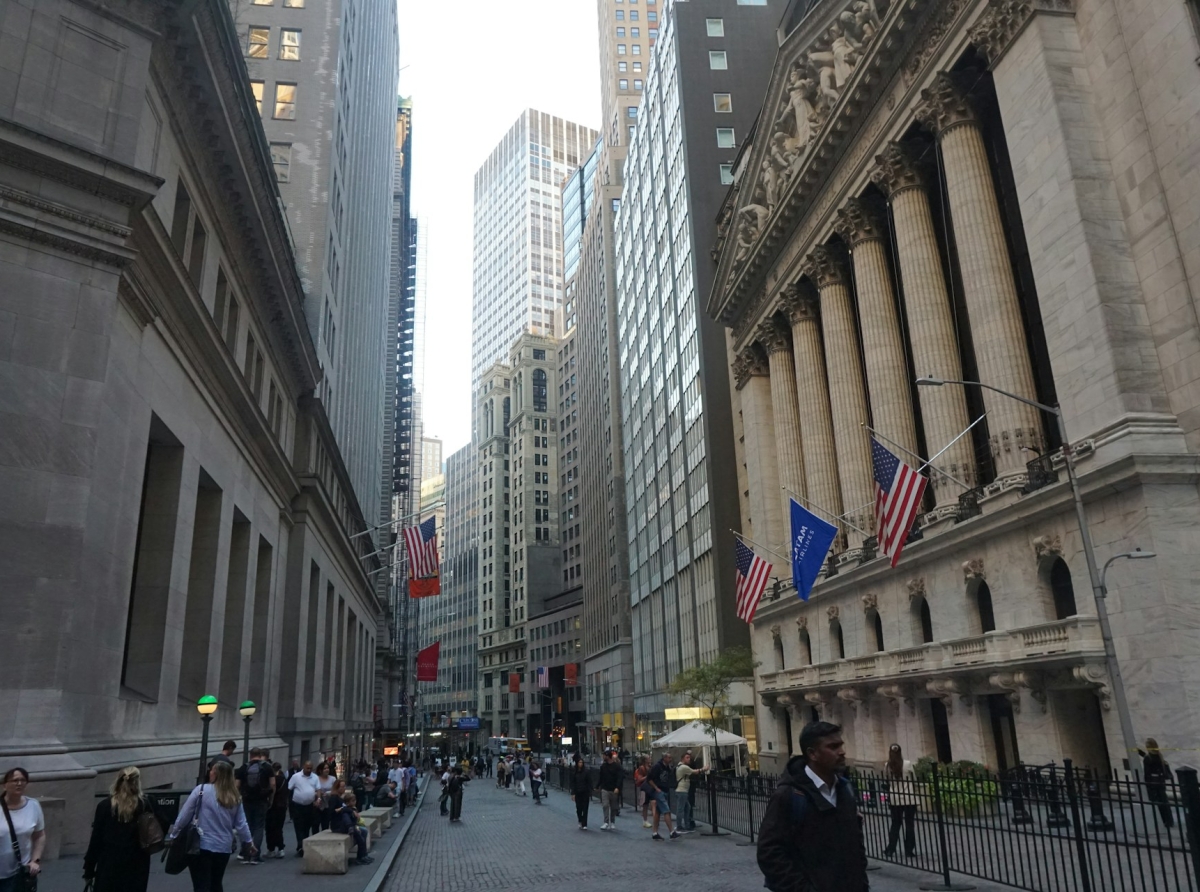The Secrets of Wall Street: Unveiling the Inner Workings of the Financial World

The Secrets of Wall Street: Unveiling the Inner Workings of the Financial World
Wall Street, often regarded as the epicenter of global finance, is synonymous with wealth, power, and influence. It is a place where fortunes are made and lost in the blink of an eye, where complex financial instruments shape economies, and where the decisions of a few can ripple across the lives of millions.
But beyond the glitz and glamour lies a world shrouded in mystery, driven by unwritten rules, insider knowledge, and strategies that define success—or failure.
In this article, we delve into the secrets of Wall Street, uncovering what makes it tick and how its inner workings impact the broader financial landscape.
But beyond the glitz and glamour lies a world shrouded in mystery, driven by unwritten rules, insider knowledge, and strategies that define success—or failure.
In this article, we delve into the secrets of Wall Street, uncovering what makes it tick and how its inner workings impact the broader financial landscape.

The Secrets of Wall Street: Unveiling the Inner Workings of the Financial World
1. The Myth of the "Self-Made" Trader
One of the most pervasive myths about Wall Street is the idea that anyone can walk in, start trading, and become a millionaire overnight. While stories of rags-to-riches traders like Jesse Livermore or modern-day hedge fund titans captivate the public imagination, the reality is far more nuanced. Success on Wall Street isn’t just about talent or luck—it’s about access to resources, networks, and insider knowledge.Networking: Relationships matter more than most care to admit. Many successful traders and bankers have climbed the ranks not solely through skill but by leveraging connections forged at elite universities, private clubs, or exclusive events.
Access to Capital: Institutional investors and high-net-worth individuals enjoy advantages unavailable to retail traders, including preferential lending terms, advanced analytics tools, and early access to lucrative IPOs (Initial Public Offerings).
Education: A degree from an Ivy League school doesn’t guarantee success, but it does open doors. Prestigious institutions like Harvard, Wharton, and Columbia Business School remain breeding grounds for future Wall Street leaders.
2. The Role of Algorithms and Automation
Technology has revolutionized Wall Street, transforming it from a bustling floor of shouting traders to a digital arena dominated by algorithms. High-frequency trading (HFT) firms now execute millions of trades per second, capitalizing on minuscule price discrepancies that human traders would never notice.Speed is King: In today’s markets, milliseconds matter. HFT firms invest heavily in cutting-edge infrastructure, such as co-locating servers near exchange data centers, to gain nanosecond advantages.
Dark Pools: These private exchanges allow institutional investors to trade large blocks of shares without revealing their intentions to the public market. While they provide liquidity, critics argue they lack transparency and may disadvantage smaller players.
Machine Learning: AI-driven models analyze vast datasets to predict market movements, identify patterns, and optimize portfolios. This technological arms race has widened the gap between sophisticated institutional investors and retail traders.
Despite these advancements, technology also introduces risks. Flash crashes, caused by cascading algorithmic errors, highlight the fragility of automated systems and underscore the need for robust safeguards.
3. Insider Knowledge and Information Asymmetry
Information is currency on Wall Street, and those with privileged access hold an undeniable edge. While insider trading is illegal, subtler forms of information asymmetry persist, giving certain players an unfair advantage.Whisper Numbers: Analysts often share unofficial earnings estimates, known as “whisper numbers,” with select clients before releasing them publicly. Traders who act on this information can position themselves ahead of market reactions.
Conference Calls and Roadshows: Executives frequently meet with top-tier investors during roadshows, offering insights that aren’t disclosed in official filings. Retail investors rarely have access to these interactions.
Regulatory Loopholes: Some practices, while technically legal, blur ethical lines. For example, lobbyists and political donors may sway regulatory decisions in favor of specific industries or corporations.
While regulators like the SEC (Securities and Exchange Commission) strive to level the playing field, enforcement remains challenging in an era of globalized finance and sophisticated evasion tactics.
4. The Psychology of Fear and Greed
At its core, Wall Street thrives on human emotions—fear and greed drive market cycles, creating opportunities for savvy investors while ensnaring the unwary.Bull Markets vs. Bear Markets: During bull markets, optimism reigns, and investors pile into assets, driving prices higher. Conversely, bear markets trigger panic selling, often leading to irrational decisions.
Behavioral Biases: Cognitive biases like overconfidence, confirmation bias, and loss aversion cloud judgment. Even seasoned professionals fall victim to these tendencies, making emotional discipline a rare but critical skill.
Market Sentiment Indicators: Tools like the VIX (Volatility Index), often called the “fear gauge,” measure investor sentiment. Understanding these indicators helps traders anticipate shifts in market psychology.
Successful Wall Street players master the art of reading not only charts but also people. They exploit collective emotions to buy low, sell high, and profit from volatility.
5. The Power of Lobbying and Political Influence
Wall Street’s influence extends far beyond trading floors—it permeates Washington, D.C., shaping policies that affect everything from tax codes to banking regulations. Major financial institutions spend billions annually on lobbying efforts to protect their interests.Deregulation: The repeal of Glass-Steagall in 1999 and the passage of Dodd-Frank after the 2008 financial crisis illustrate how regulatory changes reflect Wall Street’s priorities. Critics argue that deregulation increases systemic risk, while proponents claim it fosters innovation.
Crony Capitalism: Close ties between Wall Street executives and government officials create conflicts of interest. For instance, many policymakers later join financial firms as consultants or board members, benefiting from their insider connections.
Tax Breaks: Special provisions in tax laws disproportionately benefit wealthy investors. Carried interest loopholes, for example, allow hedge fund managers to pay lower tax rates on performance fees.
This symbiotic relationship between finance and politics ensures that Wall Street remains a dominant force in shaping economic policy.
6. The Dark Side of Wall Street
For all its achievements, Wall Street harbors a shadowy underbelly marked by scandals, excesses, and moral compromises.Fraud and Scandals: From Bernie Madoff’s Ponzi scheme to the LIBOR scandal, fraudulent activities have tarnished Wall Street’s reputation. Yet, despite high-profile prosecutions, misconduct persists due to lax oversight and perverse incentives.
Excessive Risk-Taking: The 2008 financial crisis exposed how reckless behavior—driven by short-term profits—can destabilize entire economies. Too-big-to-fail banks continue to take outsized risks, knowing taxpayers may bail them out if things go wrong.
Wealth Inequality: Wall Street contributes to widening income disparities. While top executives earn astronomical salaries, ordinary workers struggle to make ends meet. Critics argue that the system perpetuates inequality rather than fostering shared prosperity.
These issues raise important questions about accountability, ethics, and the social responsibility of financial institutions.
7. Lessons for Aspiring Traders and Investors
For those seeking to navigate Wall Street’s treacherous waters, several key lessons emerge:Education Matters: Stay informed about macroeconomic trends, geopolitical developments, and emerging technologies. Continuous learning separates amateurs from professionals.
Risk Management is Key: Never risk more than you can afford to lose. Use stop-loss orders, diversify your portfolio, and avoid chasing quick gains.
Long-Term Thinking Pays Off: While day trading captures headlines, patient investors often achieve better results. Warren Buffett’s philosophy of buying undervalued companies and holding them long-term exemplifies this approach.
Ethics Over Expediency: Integrity builds trust—a priceless asset in any industry. Avoid shortcuts that compromise your values, even if they promise immediate rewards.
Conclusion: Decoding Wall Street’s Secrets
Wall Street operates on a delicate balance of ambition, intellect, and opportunism. Its secrets lie not just in financial acumen but in understanding human nature, leveraging technology, and navigating complex systems. While the allure of wealth draws countless dreamers to its doors, only those who respect its rules—and recognize its pitfalls—truly succeed.
As the financial world continues to evolve, one truth remains constant: Wall Street rewards those who adapt, innovate, and persevere. Whether you’re an aspiring trader, a seasoned investor, or simply a curious observer, unlocking its mysteries requires patience, perseverance, and a willingness to look beyond the surface.









Report
My comments